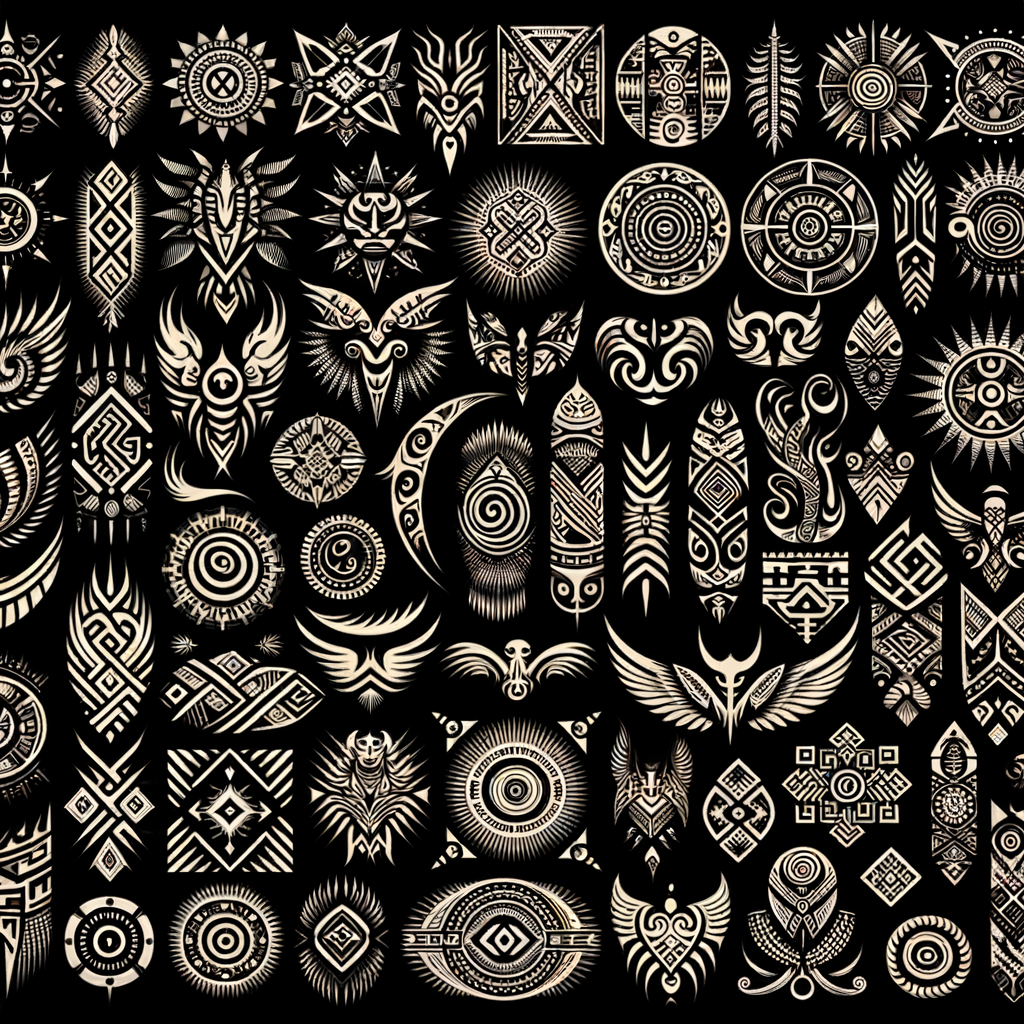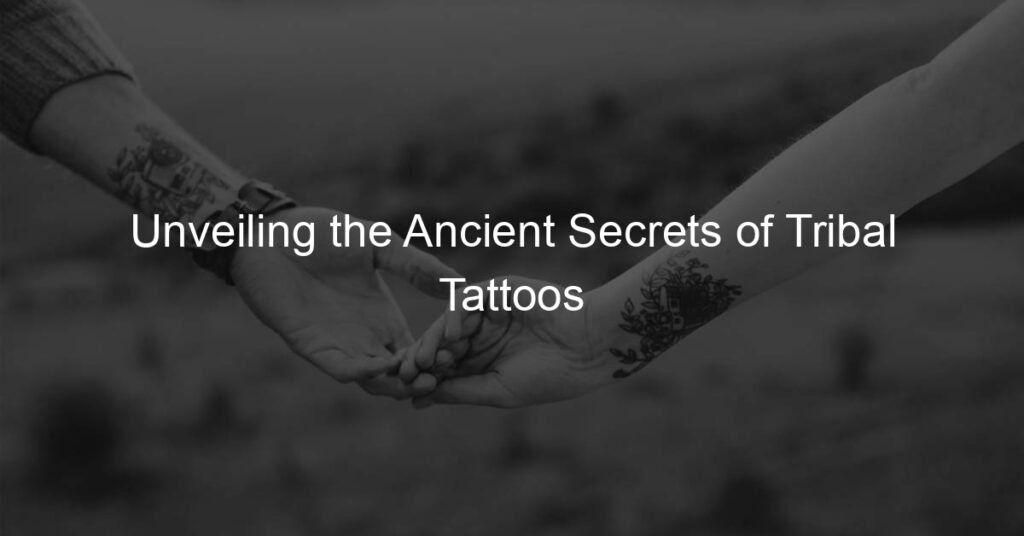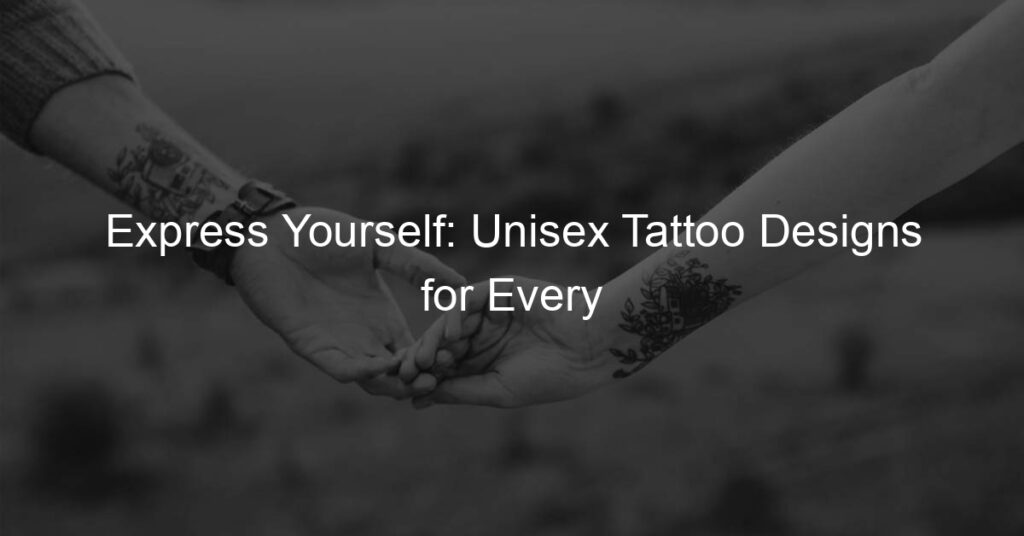
Introduction to Tribal Tattoos
Tribal tattoos are a form of body art that has been around for centuries. They are more than just a fashion statement. They are a way of expressing one’s identity, beliefs, and culture. In this article, we will delve into the fascinating world of tribal tattoos, their significance in various cultures, and their enduring appeal.
-
- Overview of Tribal Tattoos
Tribal tattoos are unique designs that are typically black in color. They are known for their bold lines and intricate patterns. These tattoos often cover a large area of the body, such as the arm or back. The designs are inspired by various tribal cultures around the world, each with its own unique symbolism and meaning.
-
- Importance of Tribal Tattoos in Various Cultures
Tribal tattoos hold a significant place in many cultures. For instance, in Maori culture of New Zealand, these tattoos, known as ‘Ta Moko’, are a rite of passage and a sign of social status. In Native American culture, tribal tattoos are used to represent a person’s spiritual beliefs and connection to nature. Similarly, in Polynesian culture, these tattoos, known as ‘Tatau’, are a symbol of courage, social status, and respect.
It’s important to note that each tribal tattoo design has a specific meaning and significance in the culture it originates from. They are not just decorative, but are deeply rooted in the history and tradition of the people.
In the following sections, we will explore the origin, designs, history, and evolution of tribal tattoos. So, whether you are considering getting a tribal tattoo or simply interested in learning more about this ancient art form, stay tuned for an enlightening journey.
Origin of Tribal Tattoos
The story of tribal tattoos is as old as humanity itself. These intricate designs have been a part of various cultures around the world, each with its unique history and significance. Let’s delve into the origins of tribal tattoos from a historical perspective.
Tribal Tattoos Origin: A Historical Perspective
Understanding the origin of tribal tattoos requires a journey back in time. These tattoos were not merely body art; they were a symbol of identity, status, and beliefs. Let’s explore the earliest evidence and geographical distribution of tribal tattoos.
-
- Earliest Evidence of Tribal Tattoos
The earliest evidence of tribal tattoos dates back to around 5,000-6,000 BC. Archaeologists discovered the well-preserved body of a man, now known as the Iceman, in the Alps between Austria and Italy. The Iceman’s body had 61 tattoos, which are believed to be the oldest known tribal tattoos.
-
- Geographical Distribution of Tribal Tattoos
Tribal tattoos were not confined to any particular region. From the tribes of Polynesia, Africa, North America, to the indigenous people of the Philippines, tribal tattoos were a global phenomenon. Each region had its unique tattooing methods and designs, reflecting their distinct cultures and traditions.
In conclusion, the origin of tribal tattoos is deeply rooted in human history and culture. They were more than just body art; they were a symbol of identity, status, and beliefs. The rich history and widespread geographical distribution of tribal tattoos make them a fascinating subject of study.
Understanding Tribal Tattoo Designs
Tribal tattoos are a unique form of body art that has been around for centuries. They are not just mere designs; they carry deep meanings and significance. Each design tells a story, represents a belief, or symbolizes a certain trait. Let’s delve into some common tribal tattoo designs and their significance.
Common Tribal Tattoo Designs and Their Significance
Here are three common tribal tattoo designs and what they symbolize:
-
- Design 1: The Maori Moko
The Maori Moko is a traditional tribal tattoo from the Maori people of New Zealand. This intricate design is often seen on the face and represents a person’s social status, achievements, and ancestry. Each Moko is unique to the individual, making it a deeply personal and significant form of body art.
-
- Design 2: The Polynesian Samoan
The Polynesian Samoan tattoo, also known as Pe’a, is a complex design that covers the body from the waist to the knees. It is a symbol of courage and strength, as the process of getting this tattoo is quite painful and lengthy. The designs within the Pe’a often represent the wearer’s rank, achievements, and personal characteristics.
-
- Design 3: The Celtic Knot
The Celtic Knot is a tribal tattoo design from the Celtic culture. This design is made up of intricate knots that have no beginning or end, symbolizing the eternal cycle of life and death. The Celtic Knot is often used to represent eternal love, friendship, or the interconnectedness of all things.
In conclusion, tribal tattoos are more than just body art. They are a way for individuals to express their identity, beliefs, and experiences. Whether it’s the Maori Moko, the Polynesian Samoan, or the Celtic Knot, each design carries a unique and significant meaning.
History of Tattoos: A Look at Ancient Tribal Tattoos
As we delve into the rich history of tattoos, we find that tribal tattoos have a deep-rooted significance in various ancient cultures. These tattoos were not merely a form of body art, but they were a reflection of a tribe’s beliefs, traditions, and identity. Let’s explore the traditional tribal tattoos of Ancient Egypt and Polynesia.
Traditional Tribal Tattoos: A Reflection of Ancient Cultures
Traditional tribal tattoos were a significant part of ancient cultures. They were used as a means of communication, a symbol of status, and a way to ward off evil spirits. Let’s take a closer look at the tribal tattoos of Ancient Egypt and Polynesia.
-
- Traditional Tribal Tattoos in Ancient Egypt
In ancient Egypt, tattoos were a common sight, especially among women. They were often seen as a symbol of fertility and protection. The most common designs were geometric patterns, often placed on the lower abdomen, thighs, and breasts. These tattoos were created using a technique called ‘tapping’, where a sharp point was dipped in ink and then tapped into the skin.
-
- Traditional Tribal Tattoos in Ancient Polynesia
In Polynesia, tattooing was a sacred ritual. The process was long and painful, often taking days to complete. The designs were intricate and unique to each individual, telling the story of their lineage, status, and personal achievements. The tools used for tattooing were made from bone, shell, or shark teeth.
In conclusion, the traditional tribal tattoos of Ancient Egypt and Polynesia were more than just body art. They were a reflection of the culture, beliefs, and traditions of these ancient societies. Even today, these tattoos continue to inspire modern tattoo designs, reminding us of our rich and diverse history.
Tribal Tattoo Significance: More Than Just Body Art
When we think of tribal tattoos, we often see them as a form of body art. However, they hold a much deeper significance than just aesthetic appeal. Tribal tattoos have a rich history and carry a profound cultural significance. They are not just about the design, but also about the story they tell and the symbolism they carry.
Decoding the Symbolism Behind Tribal Tattoo Culture
Understanding the symbolism behind tribal tattoo culture requires us to delve into the roles these tattoos play in identity and status, as well as their religious and spiritual significance.
-
- Role of Tribal Tattoos in Identity and Status
Tribal tattoos have been used for centuries to signify a person’s identity within their tribe. They can represent a person’s rank, status, or achievements. For example, in some cultures, a specific tattoo design might indicate that a person is a warrior or a leader. These tattoos are a visual representation of a person’s place within their community, making them a crucial part of their identity.
-
- Religious and Spiritual Significance of Tribal Tattoos
Aside from their role in identity and status, tribal tattoos also hold religious and spiritual significance. They are often seen as a form of protection or a way to connect with the spiritual world. For instance, some tribal tattoos are believed to ward off evil spirits or bring good luck. They can also represent a person’s spiritual beliefs or their connection to nature and the universe.
In conclusion, tribal tattoos are more than just body art. They are a form of expression, a symbol of identity, and a connection to the spiritual world. So, the next time you see a tribal tattoo, remember that there’s a rich history and deep significance behind it.
Evolution of Tribal Tattoos: From Ancient to Modern Times
The journey of tribal tattoos from ancient times to the present day is a fascinating one. They have evolved significantly, both in terms of design and technique. Let’s delve into this evolution and understand how tribal tattoo techniques have changed over time.
How Tribal Tattoo Techniques Have Evolved Over Time
From the primitive tools of the past to the modern tattoo machines of today, the techniques used for tribal tattoos have seen a significant transformation. Let’s explore these changes and the modern interpretations of traditional tribal tattoos.
-
- Changes in Tribal Tattoo Techniques
In ancient times, tribal tattoos were created using sharp objects like animal bones or shells, which were dipped in natural dyes. This technique was painful and time-consuming. However, with the advent of modern technology, tattoo artists now use electric tattoo machines. These machines have made the process faster, less painful, and more precise.
-
- Modern Interpretations of Traditional Tribal Tattoos
While the traditional tribal tattoos were deeply rooted in the culture and beliefs of a tribe, modern interpretations are often more aesthetic. Today’s tribal tattoos are a blend of traditional designs and modern creativity. They retain the bold, black lines of traditional tribal tattoos but often incorporate more intricate designs and sometimes even colors.
In conclusion, the evolution of tribal tattoos from ancient to modern times is a testament to the enduring appeal of this art form. Despite the changes in techniques and interpretations, tribal tattoos continue to be a popular choice for body art enthusiasts around the world.
Conclusion: The Enduring Appeal of Tribal Tattoos
As we draw the curtains on our exploration of tribal tattoos, it’s clear that these ancient symbols of identity, strength, and unity continue to captivate modern society. Let’s delve into why tribal tattoos remain popular today and what the future holds for them.
-
- Why Tribal Tattoos Remain Popular Today
Tribal tattoos have stood the test of time, maintaining their popularity in a world where trends come and go. Their enduring appeal can be attributed to several factors.
Firstly, the unique and intricate designs of tribal tattoos are visually striking, making them a favorite choice for those seeking a bold and distinctive form of self-expression. Secondly, the rich history and cultural significance attached to these tattoos add a depth of meaning that transcends aesthetic appeal. For many, a tribal tattoo is not just body art, but a connection to ancient traditions and values.
Moreover, the versatility of tribal tattoos is another key factor in their popularity. They can be adapted to suit individual tastes and can be placed on any part of the body, making them a versatile choice for both men and women.
-
- The Future of Tribal Tattoos
Looking ahead, the future of tribal tattoos appears bright. As long as people continue to value individuality, self-expression, and connection to cultural roots, tribal tattoos will continue to be a popular choice.
Advancements in tattoo technology and techniques will also play a role in shaping the future of tribal tattoos. With the introduction of more vibrant inks and improved precision tools, artists will be able to create even more intricate and stunning tribal designs. Furthermore, the growing acceptance of tattoos in society means that more people are likely to embrace this ancient art form.
While trends may change, the enduring appeal of tribal tattoos is a testament to their timeless beauty and significance. As we move forward, tribal tattoos will undoubtedly continue to be a cherished form of body art, bridging the gap between the past and the present, and connecting us to the rich tapestry of human culture.






